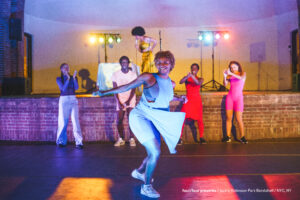
Now that in-person experiences are well and truly back on the agenda, the events landscape is quickly changing. And though the Event Trends Report we released in January 2023 revolved around themes of recovery, resilience and a return to ‘normal’, this mid-year check-in reveals fast-emerging trends that demonstrate just how enthusiastic both creators and attendees are about everything the future holds.
From attending events while away from home to exploring and expanding their hobbies and interests, attendees are ready to embrace more self-discovery, adventure and memory-making transformational experiences. Meanwhile, creators can’t wait to deliver what audiences want – from tech-enhanced events and amped-up amenities to putting sustainability and accessibility front and centre – all while encouraging plenty of pre-event excitement.
As we chart this season’s top trends, you’ll find plenty of actionable advice and practical tips to help you build them into your winter and late-2023 events and experiences. Simply look for the ‘What creators can do’ sections and start implementing our top ticket-selling strategies with confidence!
# 1. Memorable + meaningful = a formula for success
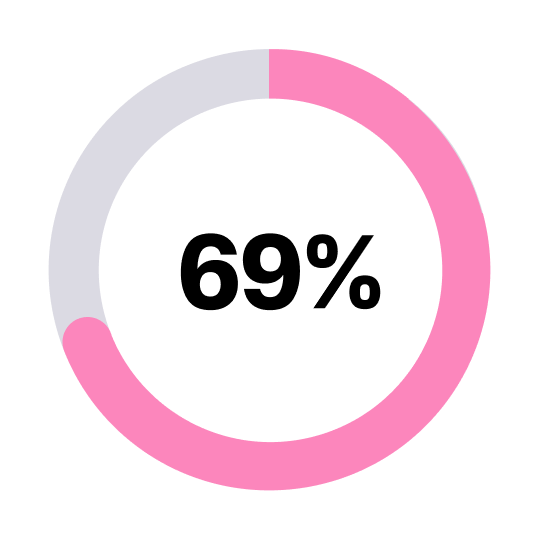
of attendees favour events that offer a meaningful, transformative experience
Our January Event Trends Report confirmed a growing post-pandemic appetite for events. Now our updated data reveals exactly what attendees are looking for: entertaining or informative events that also offer a meaningful, transformative experience.
What this trend means for creators
Good news! The 67% of creators who say providing a transformational experience is important are on the right track. But what makes for a transformative, meaningful event? Almost half (44%) of all attendees pointed to smaller, more intimate groups that encourage greater interaction with other people, while creative, hands-on activities such as art sessions, self-expression tasks and individual self-reflection prompts came a close second (42%).
But really, any event can offer a transformative, meaningful experience so long as it inspires a range of emotions, offers a new way of looking at the world or enables attendees to learn something new about themselves.
Q: In your opinion, which of the following would elevate an event to a transformative, meaningful experience?



How creators can act on this summer trend
With 69% of attendees saying they would feel more positively about attending a transformational event and 78% saying they are willing to pay more for a transformational event, what are you waiting for?
Match your offer to the interests of your target audience – younger attendees are especially drawn to self-care activities like meditation, yoga and sound baths (29% of Gen Z and 28% of Millennials). Millennials also place an emphasis on opportunities for learning and self-improvement, such as keynotes featuring motivational speakers (33%) and dynamic, collaborative activities, such as polls, quizzes and team contests (32%).

It’s worth noting that older generations don’t rate these meaningful moments in quite the same way. In keeping with our findings across all age groups, 43% of Gen X and Boomers favour smaller, more intimate groups that encourage greater interaction, however, 21% say they don’t care about any of the transformational elements cited by younger attendees.

Our key takeaway
Serve up memorable, meaningful moments and tap into attendees’ desire for transformation – for example, give them the chance to learn about themselves or the world around them – but remember to match your offer to your target audience’s interests.
# 2. Creators can bring about positive change

Attendees are willing to pay a higher ticket price for an event that is mindful of sustainability (81%) and (71%) accessibility
Our previous Event Trends Report showed events can make people feel less isolated and more connected, so it’s no wonder that ‘building community’ is the main motivating factor for creators who are organising an event this year, with almost one-third of those surveyed citing it.
A desire to facilitate connections is shared by 69% of community-building creators who believe it allows them to give something back, helps them meet people and make friends, and gives them a sense of personal satisfaction. Meanwhile, 60% do so because they know that fostering an engaged following means free marketing and word-of-mouth recommendations, which can give ticket sales and on-site revenue a boost.
What this trend means for creators
Whether it’s for personal or business reasons, the importance of building a community around the things attendees care about is increasingly clear. This is why creators who commit to improving their event’s accessibility and sustainability can not only boost sales but also consumer sentiment.
Creators are committed to doing better
61% say accessibility is important
47% have been planning events with more environmentally conscious elements in 2023 compared to 2022

By improving accessibility through the venue, using technology to cater to people with disabilities and making every effort to minimise an event’s environmental impact, creators can connect with attendees who share these values.
Our survey found attendees (especially Gen Z and Millennials) are happier going to sustainable and accessible events and are willing to pay a higher ticket price for an event that is mindful of sustainability (81%) and accessibility (71%).
How creators can act on this trend
Demonstrate your commitment to people and the planet by seeking to improve your event’s eco-credentials – for example, work with local suppliers, offset your carbon footprint and reduce waste wherever possible.
Similarly, look to improve accessibility – ask previous attendees what would have improved their experience of your event and work with a local charity that can make recommendations to help you welcome everyone to your next event. Finally, once you’ve started taking steps in the right direction, show attendees you share their values by posting about your progress on social media.

Our key takeaway
Make attendees feel part of a bigger community that cares about people and the planet by seeking sustainable solutions and improved accessibility at your event.
# 3. Tech can turbo-charge events
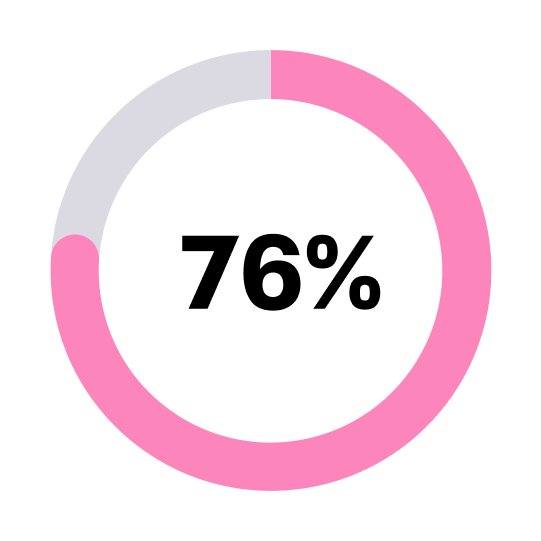
of attendees would be willing to pay a higher ticket price to attend a tech-enabled event
Attendees might prefer in-person events over virtual events, but there are still plenty of opportunities for digital tools to support and elevate their on-site experience. The interest is there – 37% of all attendees (and 45% of Gen Z) feel more positively about attending tech-enabled events. However, creators appear to be playing catch-up. Just 28% believe it’s important to incorporate new tech, and yet 76% of attendees would be willing to pay a higher ticket price for the kind of premium experience afforded by technological innovations.
What this trend means for creators
Time to focus on your gadget game. Live-streaming, Wi-Fi and QR codes are front of mind for creators who want to up their tech offer. And on the other side of the event experience, attendees are looking for the convenience of Wi-Fi (28%), the interaction provided by live-streaming (22%) and the opportunity to experience immersive technologies like AR and VR (22%).
Q: Have you seen any new event trends/technology in events over the past few years?
“I like having virtual tickets on my phone, as well as event-specific apps or websites that hold more info about the venue, performers, nearby restaurants and other places of interest.”
Attendee testimony
Ready to innovate?
From RFID chips that fit inside attendee bracelets and badges to facial recognition for contactless check-ins, event technology is constantly evolving. Keep on top of the latest tech trends and explore on-site and off-site tools that can enrich your event.

Q to creators:
If cost and logistics were no issue, which of the following technologies would you be most excited about using at an event? In other words, what’s on your wish list?


Q to attendees:
Which of these have you personally ever used or seen used at an event you have attended?
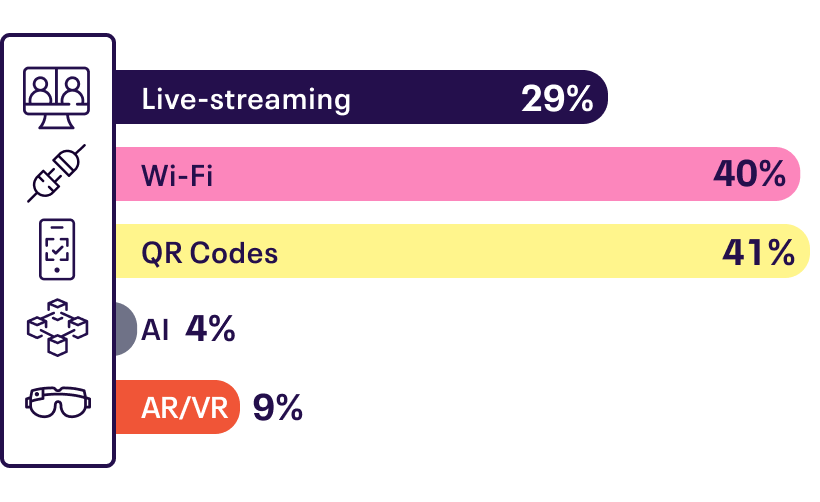

Q to attendees:
Which of the following technologies would you be most excited about using or seeing at an event?
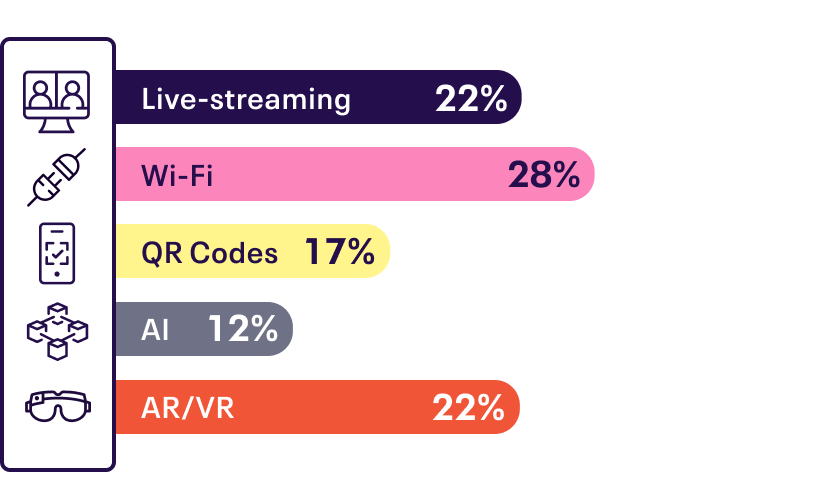
How creators can act on this trend
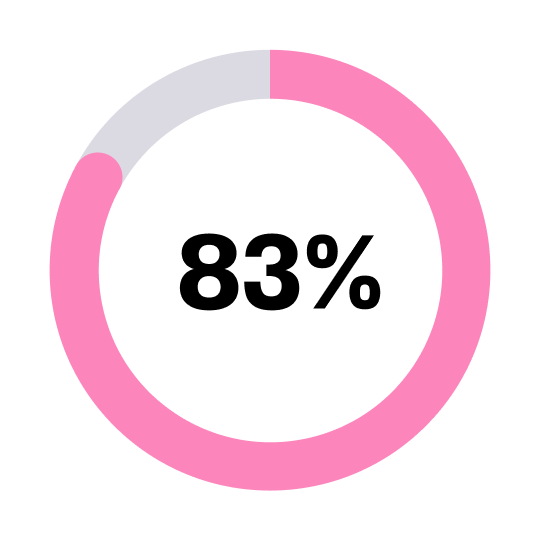
of attendees believe phones can improve the overall experience of an event
We’ve talked about tech, but don’t forget the super-computers that sit in the pocket of every attendee. Our survey found phones provoke mixed feelings. 53% of attendees are annoyed by people using them at live events and, going forward, creators will have their work cut out if they want to keep everyone happy and balance the interests of those who love to capture every moment and those who believe using phones to record an event is too much.

However, recreational use aside, the majority of attendees (83%) believe phones can actually improve the overall experience of an event – making it easier to navigate the venue, view the schedule, make reservations and purchase add-ons. To harness the advantages of phones, creators should ensure their website is optimised for mobile, keep their events description page up-to-date and enable customers to checkout in just a few clicks (Eventbrite can help here!).
As for creators, the Eventbrite Organiser app makes keeping track of ticket sales simple while providing a flawless entry experience for attendees. Having downloaded the app, take a look at the other ways Eventbrite can power your event’s growth – from our email marketing platform to Workspaces, which make it easier than ever to manage your orders, finances and reports and collaborate with team members.

Our key takeaway
Explore how tech can support your attendees’ experience of an event – from free Wi-Fi to state-of-the-art AR and VR experiences.
# 4. The rise of the “bleisure” attendee
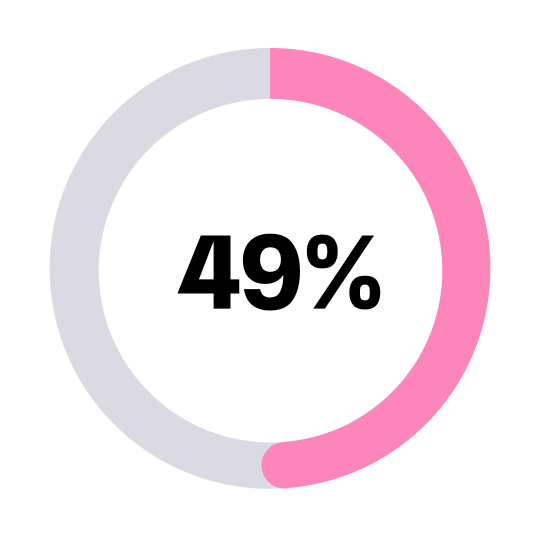
of Gen Z/Millennials will attend a live event while travelling
With the pandemic accelerating remote and hybrid working practices and flexible hours, we’re seeing the emergence of a new audience persona: the ‘bleisure’ attendee. An evolution of the digital nomad, 57% of attendees combine business and leisure whenever possible – especially Gen Z and Millennials, who are most likely to incorporate personal adventures when travelling for work.
What this trend means for creators
This signals a significant shift from our previous Event Trends Report, which identified a desire for familiar venues close to home. This mid-year check-in shows that we can expect to see growing numbers of on-the-road attendees and confirms that distance is no longer a barrier, especially to younger attendees – 49% of Gen Z/Millennials will attend a live event while travelling compared to 39% of Gen X/Boomers.
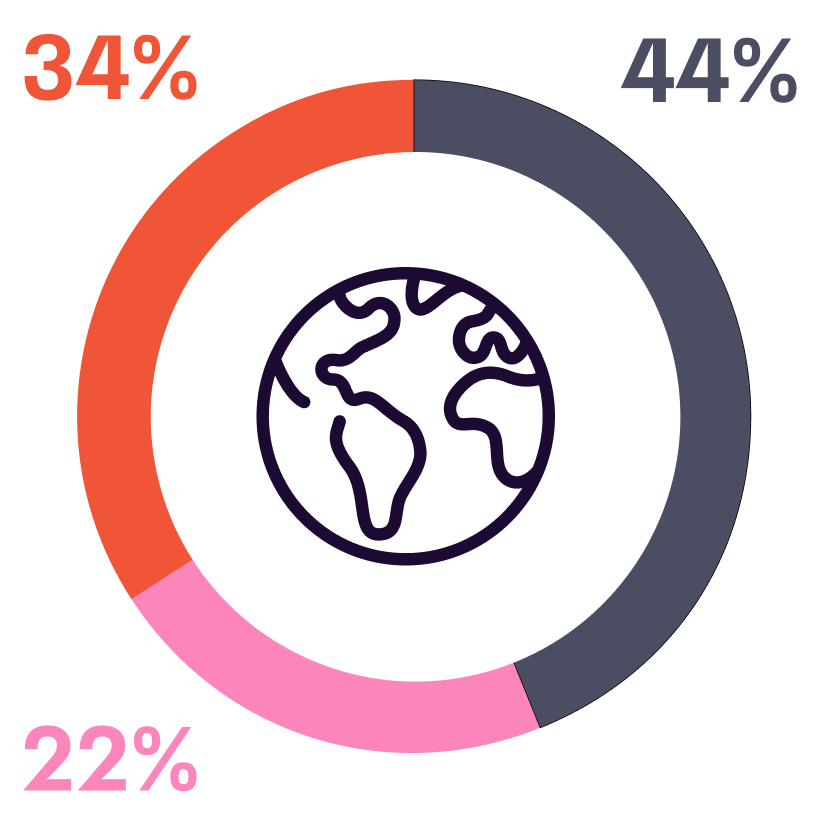
While vacationing away from
home, attendees are:
● more likely to attend live events
● less likely to attend events
● about the same likelihood
Target your tribe
From essentialists to introverts, our Persona Workbook explores what different audience segments want and how you can reach them.
The majority of creators (60%) say that up to a quarter of their attendees come from out of town – this is especially true in the US (67% of creators) – while 90% of creators in Australia and New Zealand say up to 50% of their attendees travelled to their event. In fact, 54% of creators believe people are willing to travel farther for events in 2023 compared with 2022 – and our attendee survey confirms they are right!
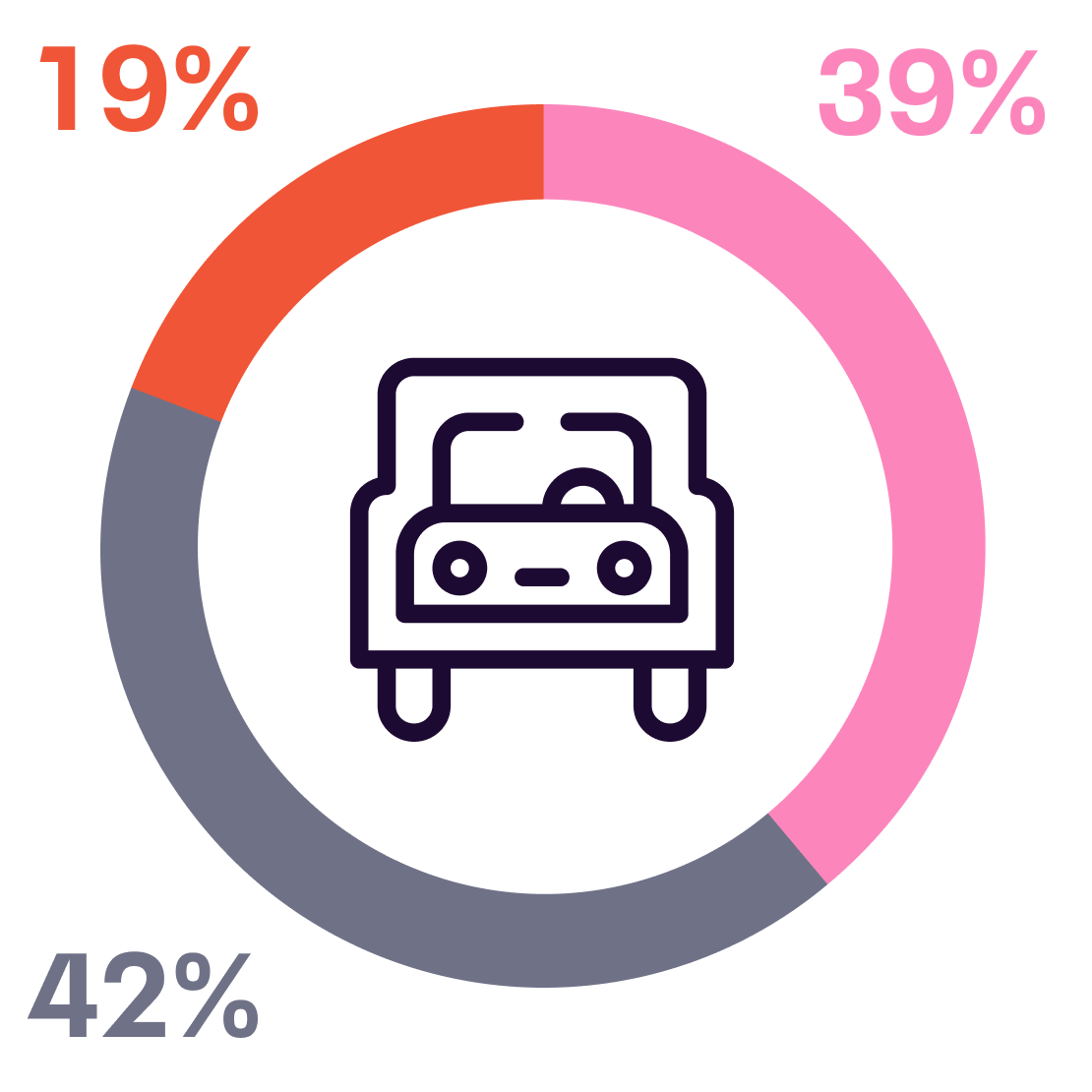
Q: How far are you typically willing
to travel to attend an event?
● ain’t no mountain high enough to keep me away from a great event
● between 11-50 miles/kms
● 10 miles/kms or less
How creators can act on this trend
With 54% of attendees willing to pay higher ticket prices for experiences that cater to people who love to combine work, travel and events, creators should reach beyond local crowds and attract out-of-towners by making their offering ‘bleisure-friendly’.
One surefire way of achieving this? Amped-up amenities. This is particularly true among the 60% of Millennials who said they would feel happier attending events that consider bleisure travellers. But with just 39% of creators saying it’s important to provide amenities that cater to attendees who are travelling and working, there’s clearly room for improvement.
You can capture the attention of this destination-hopping persona by focusing on the things that are important to them: food, transportation to the event venue and (especially for a Gen Z crowd) free Wi-Fi.
Q: Imagine you are travelling and working and you find out there will be a cool event on one of the days you are there. What would make you more likely to attend?

Provide a warm welcome
Encourage attendees to travel to your event by considering your venue’s location and logistics and establishing local partnerships.

Our key takeaway
Attract out-of-towners and destination-hopping attendees by providing amenities that cater to people who might be on holiday or in the area for work – for example, transportation to the venue, local food options and discounted accommodation.
# 5. Social media marketing reigns supreme
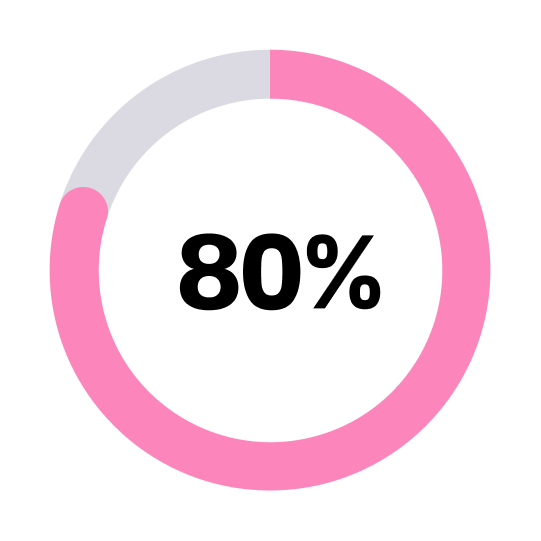
of Gen Z say social media provides them with the best event recommendations
We’ve said it before, but we’ll say it again: creators can’t afford to ignore social media’s ability to drive event discovery and interest. The most effective promotional tactics in 2022 were social media (paid social media, organic social media and influencer marketing) and emails and newsletters, with 61% and 46% of creators citing these marketing solutions respectively.
Thinking about marketing, which of the following marketing / promotion tactics were most effective for you in Summer 2022?

Similarly, in our mid-year survey, 63% of attendees say social media (influencers, social media posts/advertising, viral video or search on TikTok) overwhelmingly provides them with the best event recommendations, especially Gen Z (80%). Word-of-mouth comes a close second (61% of all attendees), which is the most popular source of event recommendations among Gen X and Boomers (74%).
We can’t ignore search – from engines such as Google and Yahoo! (favoured by 46% of all attendees) to search on TikTok (cited by 34% of Gen Z). And with Eventbrite proving to be a popular source of discovery among 33% of all attendees, it’s worth exploring how you can customise your emails and event pages to attract the attention of even more experience-seekers this year.
Q: Imagine that you receive event recommendations from each of the following sources. Which are most useful?

What this summer trend means for creators
It’s never been more important to stand out from the crowd, raise awareness of your event and drive ticket sales by developing a social marketing strategy that speaks to your ideal attendee. That means posting to the platforms where they spend their time (this differs significantly across age groups) and sharing messages that build anticipation.
“We interact with our customers as much as we can on social as it’s a great way of building a relationship with our attendees.”
Alastair Jenkins, Histoire Productions
How creators can act on this trend
With the majority of attendees looking forward to a summer of adventure, tell them exactly how your event is going to deliver on that and give a glimpse of the kind of transformative and memorable moments they can expect to experience. Plus, use your social channels to reassure out-of-towners and bleisure travellers that you’ve got their nomadic needs covered!
Top 3 social platforms by age

We’ll look at pre-event interactions in more detail in Trend 7, but first, how can you use social media while on-site to create a sense of FOMO and gather that all-important user-generated content?
Facebook, YouTube and Instagram might be the most-used channels, but BeReal, Snapchat, and Instagram are the most popular platforms for sharing experiences while attending an event – so focus your efforts on these by interacting, reposting and responding to attendees’ content in real-time.
And remember to support your socials with Eventbrite Boost, which can help creators reach their ideal audience with smart targeting insights and optimised ad spend across multiple social platforms.

Our key takeaway
Devise a social strategy that speaks to attendees on their preferred platform but don’t forget the power of word-of-mouth and search. Give people something they’ll want to talk about and optimise your event page to boost its ranking.
# 6. In-person summer-centric events take centre stage
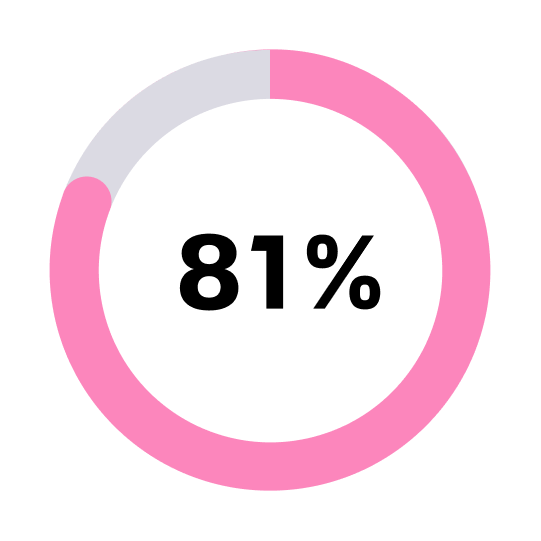
of attendees said were planning to spend as much or more on live events/experiences in summer 2023 than they did in 2022
As we hurtle towards the winter solstice, summer seems a long way off. But if our latest survey results are anything to go by, this year attendees are keen for even more event-packed fun in the sun. Nearly half (46%) of respondents said they were expecting to hit up more events or live experiences in summer 2023 compared to 2022 – and a further 39% were expecting to attend about the same number. If this trend continues, event creators would be well advised to start planning ASAP for some extra special warm-weather events.
Attendees overwhelmingly believe the best thing about summer events is the weather and being outside with friends and family. Consumers are willing to pay for their moment in the sun, too. Despite rising inflation, 81% were planning to spend as much or more this year attending live events/experiences as they did last year, and 61% said they prioritise events in their entertainment budget.
Q: Thinking back to the BEST summer events you have attended, what made them so great?
“The great weather, as it made everyone who attended the event much happier and chilled.”
Attendee testimony
In addition, attendees are happy to travel to attend in-person events and this, combined with a desire for alfresco adventures, might explain why the demand for virtual events seems to have slowed.
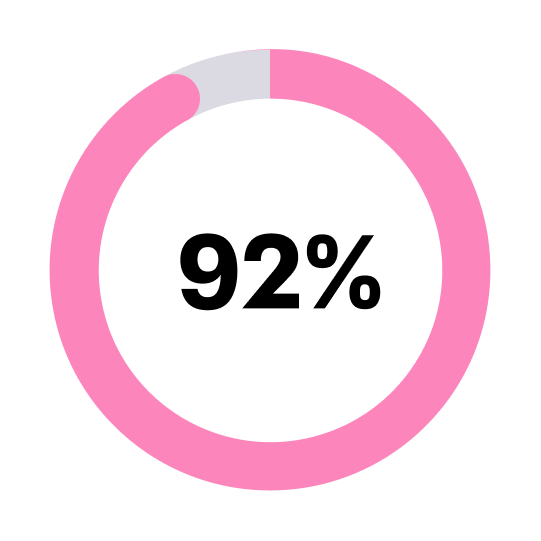
of attendees would attend an event in person over virtual if it was within an hour’s commute of their home or in another city, region or country
Only 33% of consumers plan to attend a virtual event this summer – a decrease from our findings earlier this year, where 41% of attendees had attended a virtual event in the past two years. However, this dip can likely be attributed to attendees’ preference for outdoor, in-person events that let them make the most of the warmer weather.
What this trend means for creators
Our previous Events Trends Report confirmed what we already knew: events have the power to trigger positive emotions. But feel-good factors vary across age groups, so keep in mind the kind of summer your average attendee wants based on our findings:
Summer of adventure:
Gen Z – 54% of these attendees tend to gravitate towards outdoor and pool parties, while their social-good side wants charity-fundraising tournaments.
Millennials – 40% of this demographic is also keen to make a splash with water-based activities at the beach or pool. They also want to attend live performing arts (like plays, ballets and operas) and genre-themed events.
Summer of comfort:
Gen X/Boomers – 44% of this older generation prefer to see their favourite acts, listen to the music they grew up with (or grew old to), indulge in comfort foods and drinks, and spend time with their besties. As a result, concerts at independent and/or local music venues are popular choices.
Q: Let’s talk about new ways of gathering. Which of these do you want more of in summer 2023?



All that said, attendees across all age groups are united by a love of music and food and drink – and people who attended these kinds of events last year are extra pumped about having more of these types of gatherings next summer.
Near and far
Attendees in the UK and Ireland are most likely to travel to attend an event in-person (74% vs. 63% of global attendees), whereas attendees in the US and Australia/New Zealand are most likely to attend a far-off event virtually (46% and 37%, respectively).
How creators can act on this trend
The majority of attendees are looking forward to experiencing a ‘summer of adventure’, in which they try new things, listen to new music, go to new places, eat new foods, meet new people and make new friends.
With this in mind, creators should lean into in-person or outdoor events as much as possible. Even if the elements explored above aren’t your core offer, think about how you can integrate them into your event with our round-up of music event ideas. Or how about tantalising attendees’ taste buds with event catering inspiration and our guide to finding a delicious food and drink partner?
And here’s a quick tip for marketing your summertime schedule – infuse every social post and event description with sunshine and clearly explain what people can expect. While attendees told us how much they love being outside and catching some rays, they also expect practical provisions like shaded areas and free tap water. And what happens if (when) the weather turns? Outdoor event organisers must be ready to banish rainy day blues by being prepared for every eventuality.
Finally, our previous report found 56% of attendees like virtual or hybrid events when they can’t go in-person and 49% because it’s easier to fit into their schedule – suggesting these kinds of events present a convenient option in a post-pandemic world. If you do plan to welcome remote attendees in the future, think about how you can bring a summer vibe to amplify the event experience.

Our key takeaway
Prepare for sizzling ticket sales and attract attendees across all age groups who want to enjoy the warmer weather, good food and great music by looking at how you can incorporate these elements into your event.
# 7. Pre-event interactions are essential
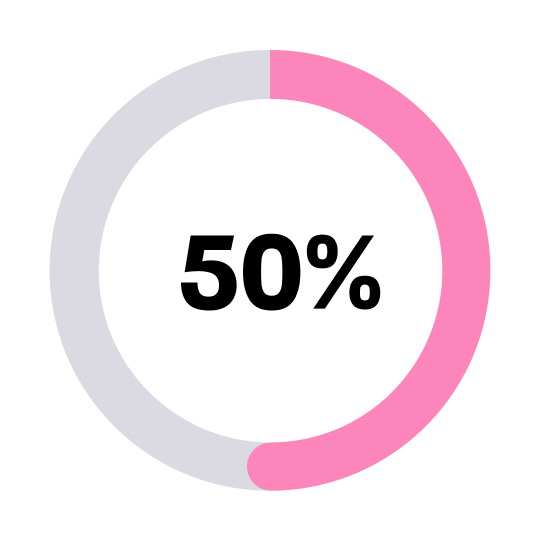
of attendees start planning/purchasing tickets for summer events between 1-3 months in advance
We know attendees love immersive and interactive events – it was one of the key trends in our previous report – and we’re now seeing this desire to be involved playing out well in advance of an event. We’re talking about pre-event interactions among creators, friends (IRL and virtual), other attendees and influencers – all of which can build hype and excitement.
What this trend means for creators
Just as creators are keen to build a community, attendees use social media to connect with their tribe and enjoy a sense of belonging by attending events with those who share their outlook on life.
And while 73% of attendees would rather stick with their friends than meet new people when attending an event or live experience, the desire to feel part of something bigger shouldn’t be ignored – 51% of attendees feel more positive if an event is committed to growing a community or following and 70% are likely to pay a higher price for a ticket as a result.

of Gen Z would be willing to pay a higher ticket price for an event that’s been influencer-endorsed
Phones come into play here once again, with attendees immersing themselves in an event and fuelling their fandom via the people they follow on social. Unsurprisingly, influencers are proving to be – well – highly influential.
The majority (65%) of Gen Z attendees would feel more positive about an event that’s being promoted by their favourite influencers and, while this is a lower priority for Millennials (34%) and Gen X/Boomers (20%), this young cohort’s willingness to put their money where their fandom is shouldn’t be ignored.
How creators can act on this trend
We know from our previous Events Trends Report that attendees want events to be always-on. In other words, they want creators to communicate with them across the entire event life cycle – from email reminders and hype-promoting social posts to follow-up surveys and video highlight reels. And with half of all attendees starting to plan or buy tickets for summer events between one and three months in advance, pre-event interactions can play an important part in converting interest into purchases.
Q: When do you start planning / purchasing tickets for summer events?



“When I started out, I posted an event at the last minute and didn’t sell enough tickets. I would definitely advise new planners and organisers give themselves three months to properly build up hype for their first event.”
Bami Kuteyi, Bam Bam Boogie
Finally, build an online community that attracts Gen Z attendees by collaborating with influencers to drive awareness and attendance.

Our key takeaway
Attendees want to be involved – months before the actual event. Generate interest in advance, build anticipation and harness influencer marketing tactics to create a sense of FOMO they won’t be able to resist.
THAT’S A WRAP!
From revealing an exciting new audience persona to outlining what attendees want from a fun-filled year of travel, self-discovery and adventure, we hope our mid-year Event Trends Report has both informed and inspired.
With so much enthusiasm for in-person events, now’s the time to build audience anticipation and find ways to make your experience extra memorable. Perhaps you’re thinking about how tech can enhance your offer or looking to add influencers to your marketing mix. Maybe you’re exploring ways to improve your event’s eco-credentials. Whatever you want to achieve, we’re by your side with helpful how-to guides and creative case studies from our community.
Ready to host a stellar event? We’d love to help. Speak to our experts now!
The surveys for this Report were carried out by MarketCast.

Q to attendees:
Which of the following technologies would you be most excited about using or seeing at an event?




